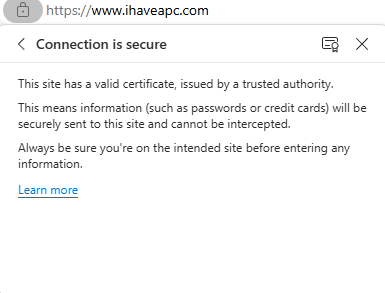In today’s digital age, we spend a significant amount of time browsing the internet. Whether you’re shopping online, checking your bank balance, or simply reading the news, you’ve likely noticed two different prefixes in your browser’s address bar: http:// and https://.

But what do those mean, and why should you care? Let’s dive into the world of web protocols and discover why that little ‘s’ makes a big difference.
What is HTTP?
HTTP stands for Hypertext Transfer Protocol. It’s the foundation of data communication on the World Wide Web. When you type a web address into your browser, it sends an HTTP request to the website’s server, which then responds by sending the webpage back to your browser.
However, HTTP has one significant drawback: it’s not secure. The data sent between your browser and the website is not encrypted, meaning it can be intercepted and read by malicious actors.
Enter HTTPS: The Secure Sibling
HTTPS, or Hypertext Transfer Protocol Secure, is the secure version of HTTP. The ‘s’ stands for ‘secure,’ and it makes all the difference in protecting your online activities.

Â
How HTTPS Works
1. Encryption: HTTPS uses SSL (Secure Sockets Layer) or TLS (Transport Layer Security) protocols to encrypt the data transferred between your browser and the website.
2. Authentication: It verifies that you’re communicating with the intended website and not an imposter.
3. Data Integrity: HTTPS ensures that the data hasn’t been tampered with during transmission.
Â
Why HTTPS Matters
1. Privacy: Your personal information, such as passwords and credit card details, is encrypted and protected from eavesdroppers.
2. Security: It prevents man-in-the-middle attacks, where hackers intercept and alter the communication between you and the website.
3. Trust: Websites using HTTPS display a padlock icon in the address bar, assuring visitors of a secure connection.
4. SEO Benefits: Search engines like Google give preference to HTTPS websites in search results.
How to Identify HTTPS
Look for these signs in your browser:
1. The URL begins with https:// instead of http://
2. A padlock icon appears next to the URL

3. Some browsers display Secure next to the URL. You can click the padlock icon to know more. The status would be Connection is secure.

Further clicking on that would let you know that the site has a valid digital secure certificate and so your data can be safely transmitted.
The Bottom Line
While HTTP laid the groundwork for the internet as we know it, HTTPS has become the new standard for a safer, more secure web. As a user, always look for the ‘s’ when sharing sensitive information online. And if you’re a website owner, implementing HTTPS is no longer optional—it’s a necessity for protecting your users and maintaining their trust.
Remember, in the vast ocean of the internet, HTTPS is your life jacket.
Stay secure, stay safe!